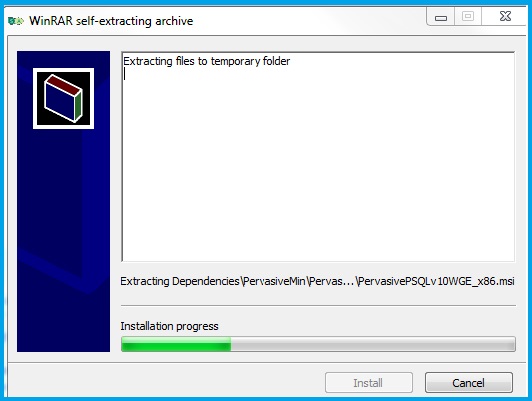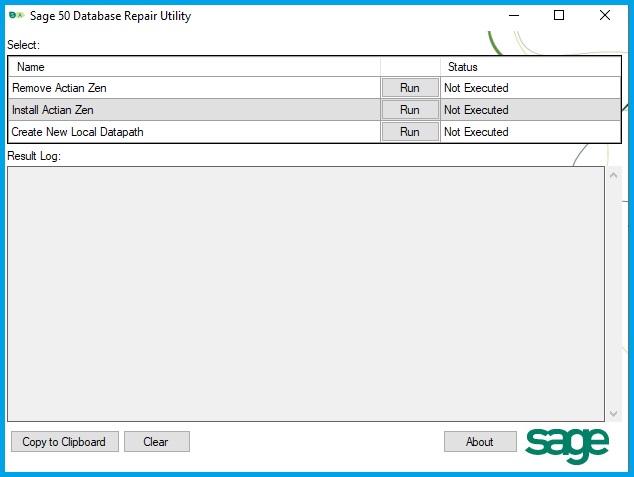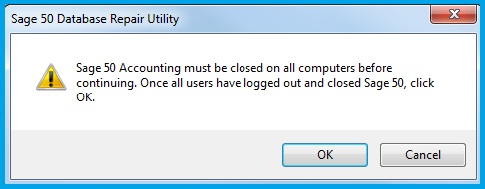Do you often encounter unexpected technical or functional data errors while running your Sage 50 software? Such problems may leave a user confused and frustrated. One of the main reasons behind this issue is the damage or corruption of Sage data files, which leads users to encounter database error messages. But don’t worry! This post will discuss how to repair the Sage 50 database using the Database Repair Utility. Let’s start!
If you need direct professional assistance while fixing Sage 50 corrupted database issues, just contact our support team at +1-844-341-4437.
Table of Contents
ToggleAn Introduction to Repair Sage 50 Database
Data corruption refers to errors or inconsistencies that occur in digital data, making it unreadable or unusable by software applications, computers, or storage systems. It can result from various factors, including hardware failure, software errors, interference during data transmission, or issues related to storage mediums like disk drive crashes. Corruption can lead to partial or complete loss of data, and it may also cause systems to behave unpredictably or crash.
In the context of database systems, like Sage 50, data corruption can affect financial records, customer data, and other crucial business information, making it difficult or impossible to access or process this information correctly. Regular backups and data integrity checks are essential practices to mitigate the impact of data corruption and repair Sage 5o Database.
Also Read: Migrate Sage 50 to New Server
What Reasons May Trigger Sage 50 Data Corruption or Damage?
Data corruption in Sage 50, as with many database-driven applications, can occur due to a variety of reasons, often leading to operational disruptions and requiring systematic approaches to resolve. Here are some common triggers for data corruption or damage in Sage 50:
- Hardware Failures: Issues such as faulty hard drives, unstable RAM, or problems with other storage devices can corrupt data files as they are being written, read, or stored. At such times, Sage users immediately opt for data repair Sage 50 strategies.
- Software Malfunctions: Bugs or glitches in the Sage 50 software itself or conflicts with other software running on the same system can lead to file corruption. Inadequate updates or patches can also introduce instability.
- Improper System Shutdowns: Abrupt power losses or improper system shutdowns can interrupt data transactions in progress, potentially leading to corrupted files.
- Network Issues: Sage 50, which operates over a network, can experience data corruption if there are network failures or interruptions during data transmission, especially in environments with poor network infrastructure.
- Virus or Malware Infections: Malicious software can corrupt, delete, or alter data files. Ensuring robust anti-virus protection and regular scanning is essential to prevent such occurrences. If this is the case, Sage users must repair a Sage company file.
- User Errors: Mistakes such as improperly modifying data files, using the software in ways not intended, or deleting files necessary for operations can cause data issues.
- Insufficient Permissions or Security Settings: Running the software under user accounts that lack necessary permissions can result in improper file handling, leading to data corruption.
- Concurrent Access: Multiple users accessing the data simultaneously without proper transaction locks can lead to conflicts and eventual corruption. Especially if the system does not manage concurrent operations well. However, with immediate data repair Sage50 action, users can resolve this issue.
Also Read: Stock Management in Sage 50
How to Repair Sage 50 Database: Stepwise Guide
We all know how popular Sage 50 accounting software is for small to medium-sized businesses around the globe. While it’s known for its robust features and reliability, due to the above-mentioned reasons, it may occasionally encounter database issues. This section will walk you through the steps to diagnose and repair Sage 50 database to get you back on track swiftly and efficiently.
1st Step: Identify the Issue:
The first step in repairing your Sage 50 database is to identify the problem. Common issues include error messages during routine operations, inability to open the company file, or reports not displaying data correctly. Take note of any specific error messages as they can provide clues on what might be going wrong.
2nd Step: Backup Your Data:
Before making any repairs, it’s crucial to back up your data. Sage 50 has a built-in backup feature that you can use to create a full backup of your database. A backup ensures that no matter what happens during the repair process, your data remains safe.
3rd Step: Usage of Database Repair Utility:
Sage 50 comes with a Database Repair Utility that can fix a variety of database issues. So, for a hassle-free usage of database repair utility, follow the below instructions:
- Initially, you must close your Sage 50 software and ensure no one else is logged in.
- Right after this, you must navigate to the program directory tab and find the ‘Sage 50 Database Repair Utility‘.
- Once you find it, now run the utility and select the appropriate options based on the issue you’re experiencing.
- After this, you must follow the on-screen instructions to complete the repair.
4th Step: Check Data Integrity
- After using the repair utility, it’s important to check the integrity of your data.
- Open Sage 50 and go to ‘File’> ‘Maintenance’> ‘Data Integrity Check.’
- This process will verify that all data in your database is consistent and correct.
5th Step: Restore Data if Needed
If the repair was unsuccessful, you might need to select the restore My Sage database alternative from the backup you created. Here, to restore your data, you must:
- Directly move to the ‘File’> ‘Restore’ option.
- Next, follow the prompts to locate and restore your backup file.
- Once restored, you must check to ensure that all data is accurate and that the issue has been resolved.
How Does the Usage of Database Repair Utility Benefit Sage 50 Users?
For Sage 50 users, incorporating the Database Repair Utility into their regular maintenance routines provides several specific benefits that enhance both the usability and reliability of the software. Here are key ways in which Sage 50 users benefit from the usage of Database Repair Utility:
- Maintaining Data Accuracy: The utility ensures that financial and accounting data stored in Sage 50 remains accurate and reliable. By fixing any corruption, users can trust the data to create reports, file taxes, and make business decisions.
- Avoiding Operational Disruptions: To quickly address and repair a Sage company file, Sage 50 users must run this database repair utility. It minimizes disruptions to the business operations and is also crucial for maintaining continuous business processes. Certainly, it helps during peak financial periods like quarter or year-end closings.
- Ease of Compliance: Accurate and consistent data is essential for compliance with accounting standards and regulations. The Database Repair Utility helps ensure that the database aligns with such requirements, reducing the risk of compliance-related issues.
- Efficient Problem Resolution: When users encounter database issues, the utility offers a straightforward solution to attempt to repair Sage 50 database before needing to contact support team. This self-service approach can resolve problems faster and more efficiently.
- Cost Savings: By reducing the need for external support team and minimizing the risk of severe data corruption, the utility can lead to significant cost savings. Preventative maintenance is generally less costly than emergency data recovery services.
- Enhanced System Performance: Regular usage of database repair utility can help maintain optimal performance of the Sage 50 software. Also, it ensures the database is free from errors that might slow down processing speed.
- Data Recovery: In instances of minor data corruption, the utility can recover data that might otherwise be lost, ensuring that users have access to all historical and current financial records.
When you decide to repair Sage 50 Database, the process may seem daunting, but by following these steps, you can address most issues efficiently and minimize downtime. Remember, regular maintenance and backups are your best defense against data loss and corruption. If you encounter problems that these steps don’t resolve, you must consider reaching out to our Sage 50 helpdesk for further assistance. Contact us using the available Live Chat Support option.
Frequently Ask Questions (FAQs)
It is recommended that you choose the restore my Sage Database alternative and back up your data daily. Obviously, you must attempt this before performing any major updates or changes to your system.
No, it’s important that all users are logged out of Sage 50 during the repair to prevent any data corruption.
If the Sage 50 Database Repair Utility fails to resolve the problem, you should ensure that no users are logged into the system. In case the issue persists, restore your data from a recent backup and reattempt the repair. If you’re still experiencing issues, it’s recommended to contact our Sage 50 technical support for further assistance.
Yes, it’s a good practice to run the Database Repair Utility periodically as part of your preventive maintenance routine. Regular checks can help catch and resolve potential issues before they become serious, maintaining the overall health and performance of your Sage 50 database.
If the same error persists, it may indicate a more complex issue. In such cases, contacting our Sage 50 support team at +1-844-341-4437 is advisable.






